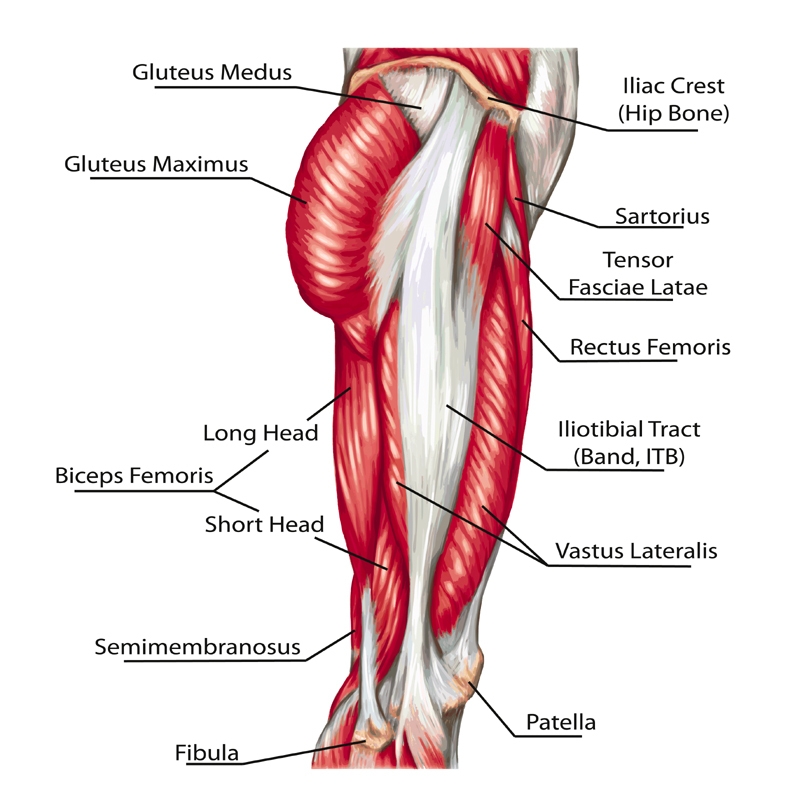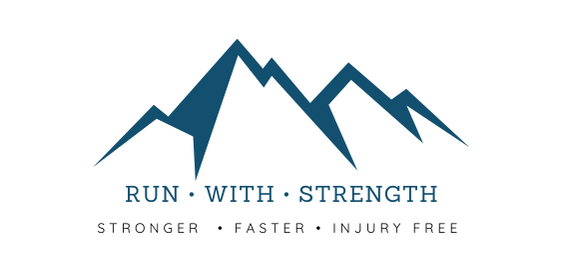Iliotibial band syndrome (ITBS) is one of the most common injuries in endurance runners. It’s usually felt as a pain on the outside of the knee, where the tight band of connective tissue known as the ITB connects the knee.
The ITB is a band of strong connective tissues (similar to a tendon) that attaches to the tensor fascia late and gluteus maximus muscles. It also attaches to the femur along it’s length, inserting into outside of the knee.

Historically it was thought the ITB’s only role was to stabilise the knee and hip. Research now suspects that the ITB may behave like a tendon, in that it stores and releases energy when running.
Below we will outline 5 steps to managing your ITBS and running pain free!
1. Manage running load
Iliiotibial band syndrome (ITBS) is an overuse injury (Like 99% of running injuries). The first step of managing overuse injuries is managing your current running load, to give the tissues some time to adapt. It is very common to experience ITBS when you suddenly increase your running load over a short period…which we are all guilty of at some point or another.
3 ways to manage running load:
- Reduce your overall running volume: As ITB injuries are usually due to overload, we need to reduce load from running to avoid further aggravating the injury. Use pain as a guide for reducing running volume. Try to keep your ITB pain below 4 out of 10 on a 0-10 pain scale when running. If your pain starts to trend over 4/10, stop and walk for a short period and see if the pain subsides. If your pain continues for longer than 24 hours, you will need to reduce your running load further.
- Avoid very slow running: Studies suggest that slow running increases load on the ITB and is more likely to irritate it (Fredericson et al. 2005). Begin with repeated short, 70-80% sprints. Reintroduce slower paced longer runs gradually.
- Avoid downhill running: Studies also suggest that downhill running increases loads on the Iliotibial band, due to increased knee flexion (Fredericson et al. 2005). Avoid excess downhill running in the initial stages of injury. Slowly re-introduce downhill running at the later stages, using pain as a guide.
2. Strength Training
Although the exact causes of ITBS are unknown, we do know some contributing factors that we can manage. Weakness in the muscles around the side and back of your hip (gluteus medius and maximus, hip external rotators and adductors) are associated with ITBS.
Including strength exercises for these muscles is essential to improving ITBS pain and reducing the likelihood of the injury returning in the future.
3 Key Exercises To Improve Iliotibial Band Syndrome
Step Ups
Step ups are a great exercises that loads the quads and glutes. When doing a step up, ensure you are pushing off from the leg on the step only, not the leg on the ground. To progress step ups, increase the height of the step, do the step up at a slower pace or add some weights to your hands
Side-lying Hip Abduction (Scissors)
Side-lying hip abduction targets the lateral glutes. Increasing the strength of these muscles helps reduce the load on the ITB and help reduce the pain on the outside of your knee. This exercise can be progressed in multiple ways. Check out the video below for progressions.
Glute Bridges
Glute bridges are a classic gluteal exercises, involve minimal equipment and can be progressed in a variety of ways. Check out the video below for glute bridge variations.
Other Treatments
Remember that treatments such as foam rolling, dry needling and massage are for helping reduce pain in the short term. Alone, they do not provide a long term solution for treating ITBS or preventing it from recurring.
